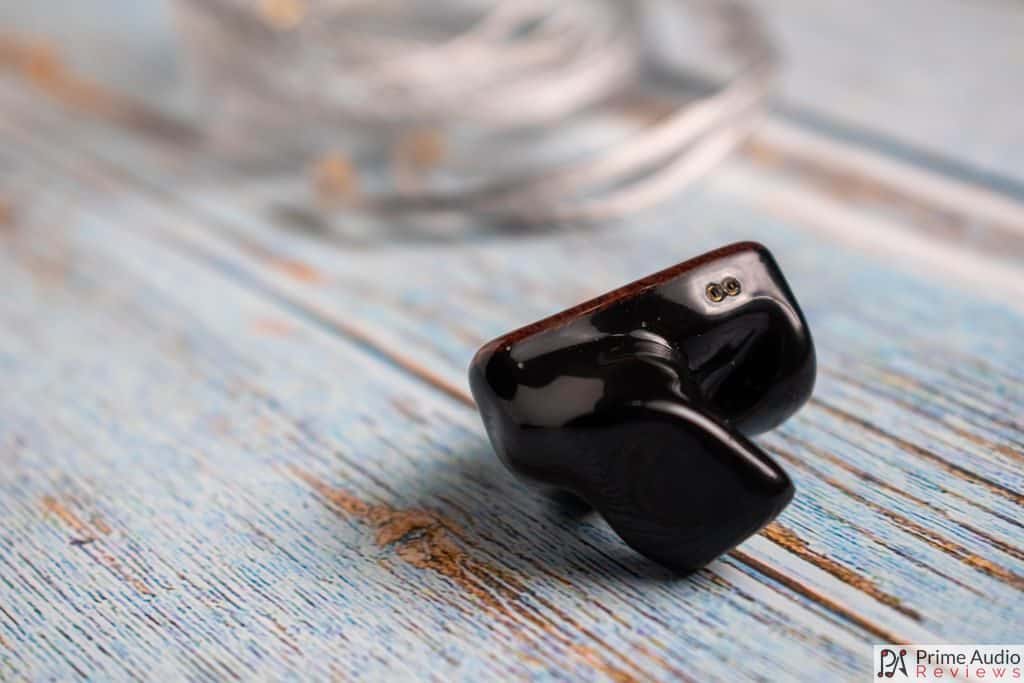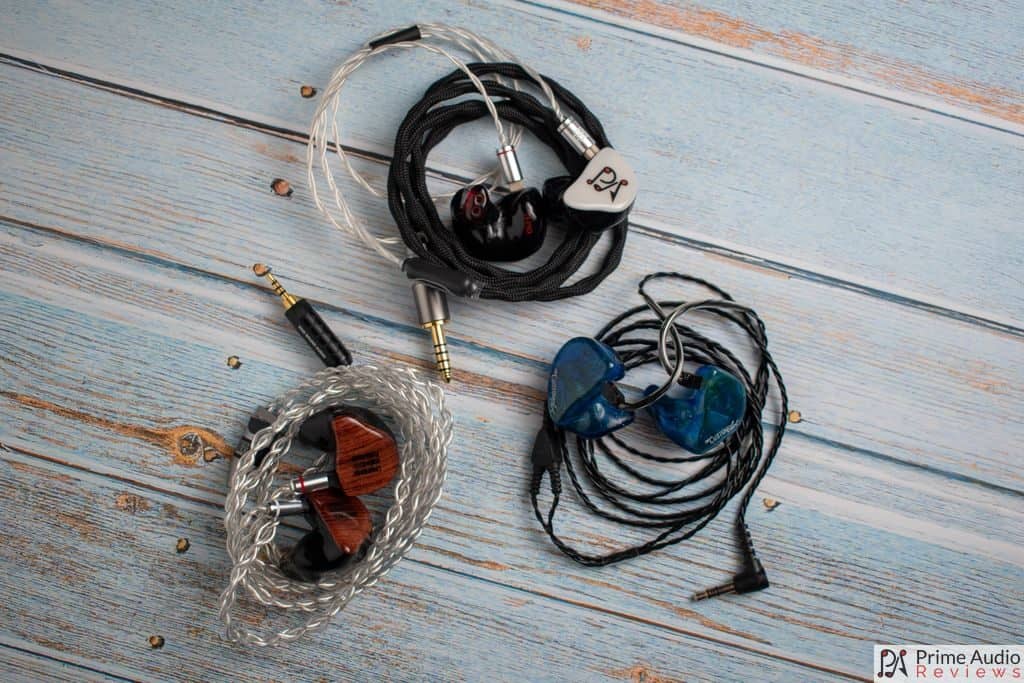Hi, there fam. In today’s review, I’m checking out the Custom Art FIBAE Black, a single balanced armature driver in-ear monitor. The Black utilizes not just the established FIBAE technology but also sports a new innovation: Pressure Optimizing Design (POD). According to Custom Art’s website:
Pressure Optimizing Design allows for extremely precise control of frequency response, improving soundstage and separation capabilities, without issues arising from crossovers or multi-driver constructions.
The Custom Art
Custom Art website: https://thecustomart.com/
Learn more about FIBAE tech: https://thecustomart.com/fibae/
This sample was provided for the purpose of an honest review. All observations and opinions here are my own based on my experience with the product.
- Sleek 3D-printed shells
- Warm, inviting character
- Value for money
- Customization limited to faceplates only
- Modest detail retrieval
Package and Accessories
This time around I didn’t get the usual packaging because I received the FIBAE Black in person from Piotr Granicki, the man behind The Custom Art, during CanJam Singapore 2019. However, the regular bundle remains the same as the other FIBAE models and includes the following:
- Custom Art FIBAE Black earphones
- Detachable SPC 2-pin cable
- Pelican 1010 storage case
- Zipper clamshell case
- Cleaning tool
- Desiccant pellet
- Warranty card
Build Quality and Design
The FIBAE Black is the first of Custom Art’s in-ear monitor models to use 3D-printing technology. Why use 3D printing? It offers more consistency across each unit, increases the speed of production time and it also allows for more precise reproduction of each person’s ear shape. It is available in both universal and custom fit (I chose a custom fit).

There is a downside, however, to this new tech. It means that there are fewer customization options available but this is likely to change once the technique is refined. With CA’s other models you can choose different colours for the shells and canals. With the Black, you can currently only customize the faceplate. The only colour option for the shells is a glossy, piano black. Fortunately, the black shells look classy AF!
The FIBAE Black is really nicely built. The thickness of the 3D-printed shells feels more uniform compared to the handcrafted models and the contours are smoother overall. There’s not much difference otherwise since The Custom Art have always produced really high-quality products.
Comfort and Noise Isolation
If you’re getting custom shells like me, the comfort will depend greatly on the quality of your ear impressions.
So does the 3D-printing work? Well, the Black is now my third CIEM from Custom Art. All three were produced using the same silicone ear moulds/impressions that I had made here in Bangkok (I highly recommend BKK Audio if you’re looking for impressions in Thailand). Although my FIBAE 2 and 3 fit great and are comfortable, the Black is even better. It has a more curved and smooth surface and gives me an even better seal than the aforementioned models.
Naturally, because I chose to get the custom version, the noise isolation is superb as is normally the case with a custom in-ear monitor. Not much else to say about it really, except that you should be aware if you try to talk to me while I’m wearing the Blacks, I’m likely to just shake my head and offer no other response.

Cable
The included SPC cable is the new Plastics1 Crystal Motion. It has a transparent TPU sheath through which you can see the silver-plated copper wiring within. The transparent plastic 2-pin connectors are unchanged from previous iterations and still have the minimalistic but very functional blue and red dots to easily identify the left and right sides.
There is a short length of memory wire at the top of the cable. Further down are 2 simple transparent plastic discs that act as a cable cinch and a matching Y-split. They’re both unobtrusive and lightweight.
The cable terminates in a right-angled 3.5 mm plug. As with previous stock Plastics1 cables, this one is really simple but very functional and comfortable. It’s pliable, lightweight and has virtually no microphonics.

Sound
Gear used for testing includes the iBasso DX120 and Soundaware M2Pro as portable sources. On the desktop, I currently have my Arcam irDAC-II in rotation which is connected to my PC via USB. The FIBAE Black does not require extra amplification but it does scale well with a better source. My favourite source tested was by far the Soundaware M2Pro which has a fantastic, holographic soundstage and smooth yet resolving character.
Dark is a term I haven’t used often in recent times but it comes to mind when I listen to the Black. Lately, it seems as though everyone is focusing on more neutral or reference tuning where technical showboating takes precedence over musical enjoyment. The Black laughs in the face of that approach and then does the exact opposite.
It has a sound that focuses on the middle bass and to a lesser extent the upper bass and upper midrange. The end result is a sound that’s warm and soothing with a little bite added for interest and contrast. Kinda like salted caramel if you know what I mean. And if you don’t, be warned; you only need one spoon to enjoy it but it’s very hard to stop after just 1 spoonful.
What makes the Black special is its ability to have such an easygoing, relaxed signature and yet still be resolving and maintain a decent amount of tonal accuracy. Because it has such a unique approach it took me a little longer than usual to adjust to the Black’s sound signature.

Bass
The Black’s bass is lush with a fullness that forms the warm foundation on which everything else rests. It focuses on the mid and upper bass which are slightly enhanced while the sub-bass is on the lighter side with moderate extension.
Despite the roundness of the bass notes it still has a fantastic, grungy texture that makes it really satisfying. A great example is the bass in Wang Wen’s “Mail From The River” starting from around the 2-minute mark which the Black reproduces with a gritty physicality.
Another fine example of the Black’s enticing bass is Porcupine Tree’s “.3”. The rolling bassline takes on a life of its own and the impact you get from the kick drum will make you question if there is really only one single balanced armature driver hidden within.
Mids
The midrange on the Black can be quite deceptive. It has the illusion of being quite thick but that’s mostly the effects of the underlying warmth and resonance of the bass as well as the attenuated treble. I reckon this is the magic created by the Pressure Optimizing Design but I could be wrong. I’m probably wrong…
The transition from the upper bass to lower mids is fairly linear, adding some girth to lower-register instruments and male vocals. Similar to the bass, male vocals are buttery smooth but rich and textured. An upper midrange rise adds presence and vibrancy to female vocals, all the while maintaining that sense of effortlessness.
The Black’s midrange richness and body exist in stark contradiction to the speed and definition that coexists along with them. It’s one of the aspects that makes this such a unique and interesting in-ear monitor.
Treble
The Black has a treble that is clear and well-defined but slightly attenuated and pushed back in the mix. This adds to the dark nature of the Black’s tonality but what I really love about it is the timbre. Everything in the treble range sounds realistic and natural and as an added bonus is completely free of sharpness or sibilance.
A little bump at 6kHz adds clarity and articulation plus the excellent extension in the upper treble adds airiness and lightness without brightness. It’s not the most detailed treble and some of the micro details will go unnoticed but it fits in perfectly with the Black’s laid back style.
Soundstage
The Black’s dimensions are reasonably modest, at least, in terms of width. The depth portrayed by the Black is quite impressive, although it occupies a fairly narrow space in front of the listener. Despite its rounder notes and slower transients, the Black maintains good layering with a dark background and there is ample separation between instruments to avoid feeling closed-in.

Comparisons
The FIBAE 2 is more V-shaped in comparison with the Black. It has a more energetic upper midrange and treble giving it a brighter character. Midrange notes are thinner, making it slightly less forgiving although it still has the characteristic Custom Art smoothness.
Despite the FIBAE 2’s extra treble presence, the Black’s stage dimensions feel larger. So even with its note thickness, the Black paints a clearer picture because of its blacker background and cohesiveness.
The FIBAE 3 shifts its focus further up the scale than the Black. Its bass has a similar character with a slow attack and solid impact but is positioned behind the midrange. FIBAE 3 brings the midrange forward, letting vocals and instruments enjoy the spotlight. Its treble is more open and airy as well, giving it a lighter and brighter character compared to the Black.
FIBAE 3’s stage is wider but has less depth than the Black. This gives it a rounder stage with more even proportions but the forwardness of its midrange makes it feel quite intimate. Details are more apparent on the FIBAE 3 but the Black is more musical and inviting and draws you into its warm embrace.

Conclusion
I know it’s a term that gets thrown around loosely but the FIBAE Black is just an intensely musical IEM. With its single balanced armature driver, the Black has a very cohesive presentation which adds to the naturalness of its sound and enhances its earthy, organic style.
It’s not the most technical IEM and not suitable for those who prefer an analytical or reference sound. With better extension on either end, this would be a serious flagship contender. But I can’t really take points away for that because the Black isn’t trying to be anything except for what it is.
The Black is designed for pure, unadulterated enjoyment of music and it delivers in spades. With its supremely comfortable 3D-printed shells, reasonable price and unpretentious character, there’s a heck of a lot to like about the Black.
Specifications
- Single proprietary Balanced Armature
- Pressure Optimizing Design
- 108.5dB @1kHz @0.1V
- Low %THD
- 5.2 Ohm @1kHz (+-0.8 Ohm 10Hz-20kHz)
- 3D printed acrylic shell
- 10Hz-16000Hz (+-10dB into IEC 60318-4 coupler)
- Custom or Universal fit


